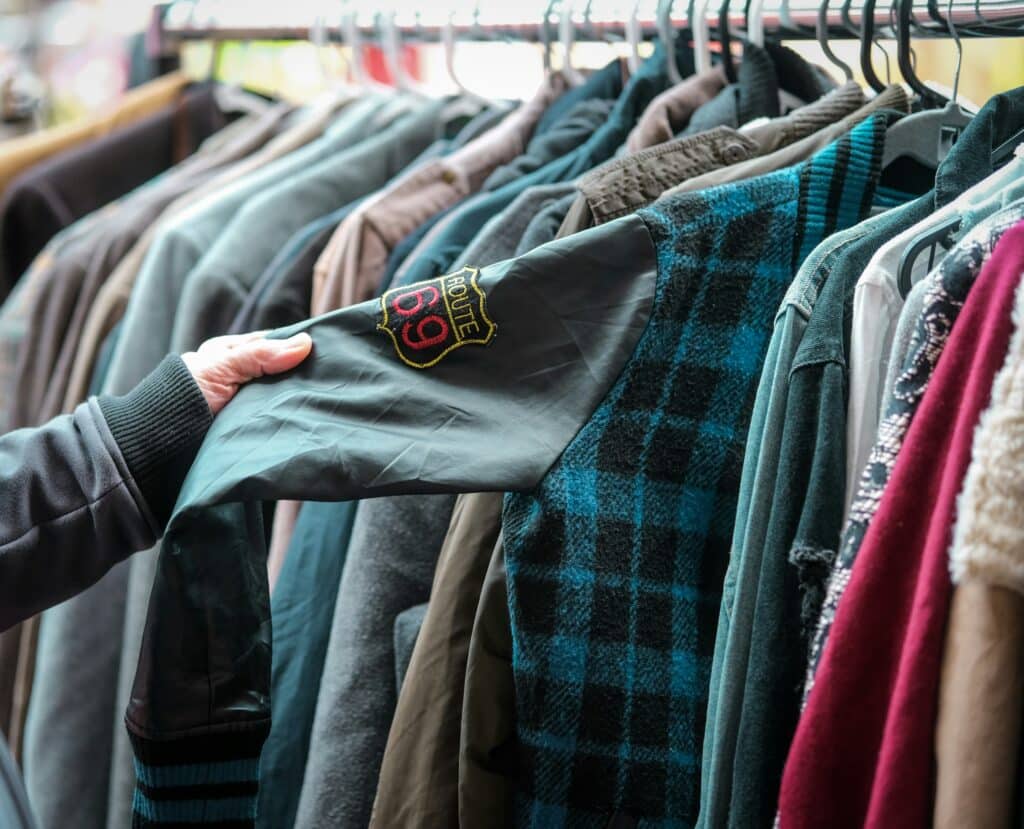But what if I told you there’s a method to the madness? A well-lit path leading you right to the treasure chest, filled with unbeatable deals and incredible finds?

Well, consider this your treasure map. In this comprehensive guide, we will dive deep into the intriguing realm of second-hand shopping and explore the benefits of both free and paid options. Whether you’re a seasoned bargain hunter or a newbie to the thrift shopping scene, this guide will equip you with the knowledge you need to find the best deals and make the most of your second-hand shopping experiences.
🚀 Journey into the World of Second-Hand Shopping
Often overlooked and underestimated, second-hand shopping has emerged as a popular choice amongst savvy shoppers, minimalist enthusiasts, and sustainable living advocates. The allure? High-quality items at significantly lower prices, the thrill of the hunt, and the satisfaction of making environmentally conscious decisions.
Yet, the world of second-hand shopping can be overwhelming for the uninitiated. The plethora of platforms and options, the uncertainty around product quality, and the unpredictability of what’s available can make the process feel daunting. This guide aims to demystify these aspects, providing you with the key to unlock the best deals.
🔎 Free vs Paid: The Great Debate
The debate between free and paid options in second-hand shopping is as old as the concept itself. Both come with their unique set of advantages and drawbacks. The ultimate question, however, is which one provides better value for you?
While free options can offer unbeatable prices (after all, you can’t beat free), they often require more time and effort. Paid options, on the other hand, usually provide a more curated experience, with potential for better quality and convenience. But how do you know when to opt for which? Fear not, as we’ll delve into the nuances of both, enabling you to make informed decisions.
🌟 Unveiling the Benefits: The Art and Science of Second-Hand Shopping
In this guide, we’ll not only compare free and paid options but also unveil the science and art behind successful second-hand shopping. From understanding the best time to shop, to learning the tricks to assess product quality, to mastering negotiation skills – we’ll cover it all!
Be ready to challenge preconceived notions and bust common myths about second-hand shopping. Through this journey, you’ll gain a new perspective on second-hand shopping – one that sees it not merely as a way to save money, but also as an opportunity to discover unique items, contribute to a circular economy, and reduce waste.
Whether you’re on a budget, seeking to decrease your environmental footprint, or simply enjoy the thrill of a good find, this guide will serve as your compass, navigating you through the vast sea of second-hand shopping to unlock the best deals.
So, buckle up, fellow thrifters! We’re about to embark on a thrilling adventure into the world of second-hand shopping. Let’s unlock the best deals together! 🗝️
The Second-Hand Shopping Phenomenon: Why It’s Trending
Second-hand shopping has seen a significant upsurge in recent years. Not only has it become a cost-effective solution for many, but it also promotes sustainable living. With a rise in online platforms offering second-hand goods, choosing the best deals can be a daunting task. An engaging video on the channel ‘TEDx Talks’ titled ‘The Art of Thrifting: Navigating Your Way to the Best Deals’ offers a deep insight into the second-hand shopping world.
However, one common dilemma that shoppers face is deciding between free and paid options on these platforms. The ‘free’ tag might seem alluring, but are these deals really worth it? On the other hand, paid options ensure a certain level of quality and reliability, but could they be overpriced? To clear up these doubts, let’s dive deeper into the pros and cons of both options.
Before we proceed, it’s crucial to remember that every deal is unique and must be evaluated on its individual merits. What may be a jackpot for one might not necessarily be the same for another. This article aims to provide a comprehensive guide to help you unlock the best deals while exploring second-hand shopping.
Free vs Paid Options: A Comprehensive Comparison
When you browse through second-hand shopping platforms, you’re likely to come across both free and paid options. But which one offers the best deal? To understand this, let’s break down the main aspects: cost, quality, and reliability.
| Aspect | Free Options | Paid Options |
|---|---|---|
| Cost | Zero upfront cost. Potential for hidden costs (e.g., transportation, repairs). | Upfront cost. Typically, no hidden costs. |
| Quality | Varies. Some items may require repairs or restoration. | Generally higher, especially if the item is certified by the platform. |
| Reliability | Not always reliable. The item may not match the description. | More reliable. Sellers are often rated and reviewed. |
Refer to the table above and weigh your options wisely. For instance, if you’re looking for an item for temporary use or if you’re capable of restoring it, a free option might work for you. Conversely, if you’re in search of a high-quality, reliable item, you might want to consider paid options.
Navigating Free Options: What to Keep in Mind
Free options in second-hand shopping can indeed be enticing. However, they come with their fair share of challenges. Here are some key points to remember while navigating free options:
- Verify the Item: Always make sure to verify the item before finalizing the deal. This can be done by asking for more pictures, details, or even meeting the seller in person.
- Consider Transportation Costs: Free items might require you to pick them up, adding to your expenses. Be sure to factor this into your decision.
- Beware of Scams: Unfortunately, free options can sometimes be used as bait for scams. Protect yourself by never sharing personal information and by using secure payment methods when necessary.
For more tips on navigating free options, check out the YouTube video ‘How to Shop for Free: Tips and Tricks for Second-Hand Shopping’ by ‘The Budgetnista’.
Exploring Paid Options: Maximizing Value for Money
Paid options in second-hand shopping, while offering a level of reliability, can sometimes be overpriced. Here are some tips to ensure you’re getting the most bang for your buck:
- Compare Prices: Don’t settle for the first deal you see. Compare prices across various platforms to ensure you’re getting a fair deal.
- Check Seller Ratings and Reviews: Always check seller ratings and reviews before making a purchase. This can give you an insight into the seller’s reliability and the quality of their items.
- Negotiate: Don’t be afraid to negotiate the price. Most sellers expect it, and you might end up getting a better deal.
By keeping these tips in mind, you can ensure that you’re making the most of your second-hand shopping experience. So go ahead, explore the world of second-hand shopping and unlock the best deals for yourself!
Conclusion
In the conclusion of this in-depth analysis, we have dissected numerous complex concepts related to software engineering and information technology, an effort aimed at broadening understanding of this highly technical field.
Looking back, we kicked off our discussion with a comprehensive exploration of the fundamentals of software engineering, painting a clear picture of how this discipline has emerged as a cornerstone in today’s technology-driven world. 🌍
We then ventured into the intricacies of various coding languages and their respective pros and cons. This essential knowledge allows software engineers to select the right tools for their projects, thus enabling them to develop innovative solutions that solve real-world problems. 💻
Our focus then shifted to the role of quality assurance in software engineering, shedding light on its importance in ensuring the development of error-free, reliable, and efficient software systems. A fail-safe that saves companies from costly mishaps down the line. 🔍
One of the highlights of our discussion was the in-depth analysis of various software development methodologies such as Agile, Scrum, and Waterfall. We carefully unpacked their unique features and highlighted their advantages and drawbacks, providing you with a broad perspective to guide your choice of methodology in future projects. 🚀
We also underscored the importance of software maintenance and updates, emphasizing how they can significantly enhance the lifespan and performance of software systems. A critical, yet often overlooked, aspect of the software engineering landscape. 🛠
Lastly, we shed light on the pivotal role of software documentation, a key element that ensures smooth handovers and effective communication among team members and stakeholders. 📝
It is my sincere hope that this article has empowered you with a wealth of knowledge and insights into the captivating world of software engineering and IT. I encourage you to apply these learnings in your professional journey, as they can be a springboard to your success in this ever-evolving field.
If you found this article informative, I invite you to share it with your colleagues, friends, and followers on social media. I also look forward to hearing your thoughts, comments, and experiences in the field. Feel free to reach out to me directly or leave your comments below. Your feedback is the driving force that inspires me to delve deeper and deliver more enlightening content for you. 👥
For further reading, I recommend the following sources:
IEEE Transactions on Software Engineering,
Information and Software Technology Journal,
Journal of Empirical Software Engineering. 📚
Thank you for taking the time to read this article. Remember, the quest for knowledge is a journey, not a destination. So, keep learning, keep growing, and keep pushing the boundaries of what’s possible in the realm of software engineering and IT. 🚀
Here’s to building a better, more innovative future through technology. Cheers! 🥂
Article references:
[1] Institute of Electrical and Electronics Engineers
[2] Elsevier B.V
[3] Springer Nature



